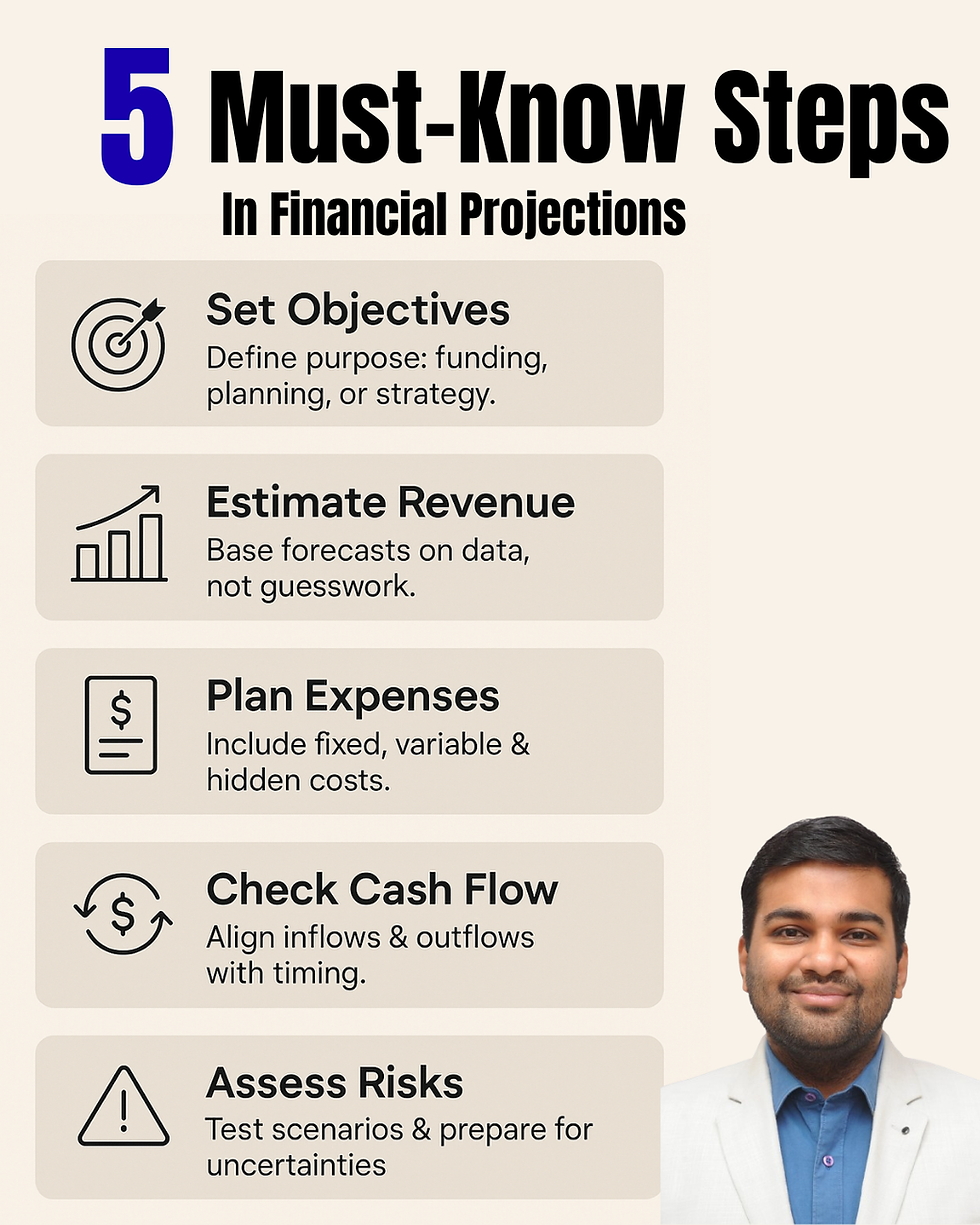What is Financial Modeling and Valuation? A Practical Guide
- cavishnumanickam
- Aug 29
- 2 min read

If you’ve ever wondered “What is financial modelling and valuation?” you’re not alone. This is one of the most common questions I hear from entrepreneurs, professionals, and even finance students. And here’s the truth: most people confuse financial modelling with “just building an Excel sheet.” But the reality is much deeper—and far more valuable.
What is Financial Modelling?
Financial modelling is not about rows and formulas—it’s about creating a story of your business in numbers. It’s the structured way of translating your strategy, assumptions, and risks into a financial blueprint.
A well-built model gives you answers to crucial business questions:
What happens if sales grow faster than expected?
How do expenses impact profitability if they rise 15%?
At what point does the business break even?
What is Valuation?
Valuation is the natural extension of a model. It asks:“What is this story worth today and in the future?”
Using your financial model, valuation techniques (DCF, multiples, comparables) help investors, lenders, and even you—the business owner—understand the worth of your business and make informed decisions.
How to Do Financial Modeling? (5-Step Approach)
When clients ask “How to do financial modeling?” I recommend this 5-step framework:
1️⃣ Set ObjectivesDefine the purpose of your model. Is it for fundraising, budgeting, or long-term strategic planning? Clear objectives ensure you build the right kind of model.
2️⃣ Estimate RevenueProject sales based on realistic assumptions—historical data, market trends, and growth strategies. Avoid over-optimism; the model is only as strong as its inputs.
3️⃣ Plan ExpensesAccount for both fixed and variable costs, operating overheads, and future investments. This helps ensure profitability is not just a number but a sustainable reality.
4️⃣ Check Cash FlowLink revenue and expenses to cash flow. This reveals liquidity gaps, working capital needs, and whether the business can sustain itself during lean months.
5️⃣ Assess Risk with ScenariosTest “what-if” situations:
What if sales drop 10%?
What if funding is delayed?
What if expenses spike unexpectedly?
Scenario planning is where financial modelling turns into a decision-making weapon.
How to Learn Financial Modelling?
Another popular question: “How to learn financial modeling?”
My answer: by practicing with real business cases—not just templates.
Templates teach structure, but real-world application comes when you try it on actual companies, industries, or even your own business.
Start small: build a simple P&L projection, add scenarios, then connect it to cash flows. Over time, you’ll build the muscle to create sophisticated models.
The Bigger Picture
Financial projections aren’t about predicting the future. They’re about preparing for it.
When done right, financial modelling and valuation stop being just “numbers in Excel” and instead become your strategic compass—guiding funding decisions, growth strategies, and even crisis navigation.
Key Takeaway:
Financial modelling and valuation are not about complexity, they’re about clarity. Done right, they simplify decision-making and put you in control of your business journey.




Comments